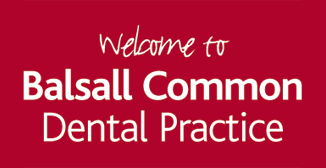



Dental Factfiles

Crooked Teeth [Orthodontics]
Crooked teeth are straightened by the use of special devices and techniques [orthodontics]. An orthodontist is a dentist who has been specially trained to use a selection of braces (orthodontic appliances), both fixed and removable, to improve the appearance and health of the teeth and gums.
In general, orthodontic treatment is undertaken for two different groups: children, typically aged between 12 and 14 years old, or adults. The specific timing of treatment will, however, vary from patient to patient. A dentist is the first person to speak to. Based on the concerns, a decision will be made, if appropriate, to refer to an orthodontist.
The orthodontist will need to know what particular concerns there are about the teeth. He or she will undertake a detailed examination and possibly take x-rays and photographs of the face and teeth. Before deciding on the best course of treatment, the orthodontist will also take moulds of the teeth. The orthodontist will then explain the preferred course of treatment to obtain the best results. Options will be discussed as well as any potential problems and/or limitations with the proposed treatment.
The orthodontist may ask the dentist to remove one or more of either:-
a) Baby teeth - occasionally baby teeth stay in the mouth for longer than they should and delay the adult teeth coming through. In these cases, their removal will significantly help.
b) Adult (permanent) teeth. Many people have too many teeth for the size of their jaws and so the removal of some of the adult teeth may be needed to make space to straighten the crooked ones. The decision to remove teeth is never taken lightly and is based on careful consideration of the position of the teeth and how they bite together. If the teeth are not too crooked, it may be possible to have treatment without having any removed. In this case, it will usually involve the patient having to wear a night brace (head-gear) in order to make room to straighten the teeth.
The following factors could delay the start of treatment:
The number of adult teeth in the mouth.
Orthodontic treatment that involves the use of fixed braces usually starts when all the adult teeth have appeared in the mouth. However, a removable brace can be fitted at an earlier age if it is necessary.
The general condition of the teeth and gums.
If there is dental decay or gum disease, orthodontic treatment will need to be delayed until it is treated. If it is not, there is a real risk of both the decay and the gum disease getting worse when a brace is fitted.
The presence of a waiting list for treatment.
There is a great demand for orthodontic treatment and relatively few specialist orthodontists. As a consequence, there is often a delay in receiving treatment.
Essentially there are two kinds of brace:-
- Fixed braces - these are individually fixed to the teeth with a special glue and therefore cannot be removed by the patient. This type of brace is used when the teeth are very crooked and offers the best results. Some patients (especially children) like to choose different colours on the brace to make them more trendy - e.g. the colours of their favourite football team. Adults may wish to choose clear or 'invisible' braces.
- Removable braces - are very useful at moving either individual or groups of teeth, for example for correcting a deep bite or widening a narrow upper jaw. As such they can be used at an earlier age than the fixed brace. This type of treatment usually precedes fixed brace treatment. The big advantage of removable braces is that they are easily cleaned.
The time needed to effect the necessary corrections very much depends on:
How crooked the teeth are.
The more complicated the problem, the longer the treatment is likely to take; e.g. teeth that have failed to grow into the mouth properly can take up to two years to straighten.
The type of brace.
Fixed brace treatment on average will take up to 18 months and removable brace treatment, from 6-9 months.
Care of the appliance.
Repeated breakages and poor cleaning of the brace will significantly delay treatment time.
The fitting of the brace is not painful. The patient may well experience a degree of discomfort, from both the teeth and inside of the cheeks, for a few days following the initial placement of the brace and subsequent adjustments.
Once the brace (fixed or removable) has been fitted, visits to the orthodontist at 4-6 week intervals will be needed in order to monitor progress and have the brace adjusted. It is very important to continue with regular check ups with a dentist to ensure that the teeth and gums remain in the very best condition possible throughout the treatment.
It is essential to ensure that both the teeth and the brace are kept as clean as possible. Any particles of food and plaque left around the brace means that you are more at risk of developing tooth decay or gum disease. The orthodontist, dentist or hygienist will advise about the use of any special toothpastes, brushes or mouthrinses to help keep your mouth as healthy as possible during your orthodontic treatment.
![]()
Practice Info
- Home
- Quality Care Charter
- Expectations ... Exceeded
- Opening Hours
- The Team
- Treatments Provided
- High-tech Prevention
- Porcelain Veneers
- Smile Whitening
- Orthodontics
- Invisalign
- Dental Implants
- New Registrations
- Appointments
- In an Emergency
- Feedback
- Price List
- Special Offers
- Your Adult Dental Plan
- Your Children's Dental Plan
- Useful Links
- Testimonials
- Practice Accreditations
Special Content
Copyright © PracticeBox. All rights reserved.
All website design and licensed content belongs to PracticeBox.
Do not copy any content including design and images.
